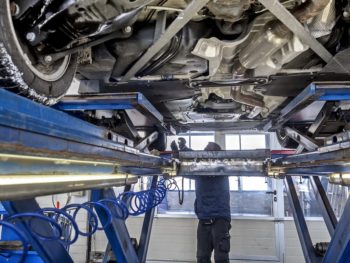Almost one in five fleets (18%) have seen car and van downtime rise over the last 12-18 months, new research shows.

Of those, almost six out of 10 (59%) have seen an increase of more than a month and more than half (52%) have subsequently tried to sort the problem by switching to manufacturers that can offer better parts supply.
The figures were revealed in the 2024 Arval Mobility Observatory Fleet and Mobility Barometer, which questioned 8,605 businesses in 30 countries about their vehicle operations.
Shaun Sadlier, head of Arval Mobility Observatory in the UK, said the only surprise from the research was that only 18% of respondents said they were affected.
“Our impression is that the problem is probably more prevalent,” he continued.
Sadlier also said there were at least a couple of convergent trends impacting on fleets here.
“One is that because new cars and vans have been difficult to get hold of since the pandemic, most businesses are now operating older vehicles that inevitably tend to require much more maintenance and repair.
“The other is that alongside new vehicle shortages, many parts have also been in short supply, although the picture is not consistent across all manufacturers and models.”
The BVRLA warned in mid-2023 that fleets were being hit by a lack of parts and increasing SMR (service maintenance and repair) costs and delays. Some 92% of respondents to its half-year Industry Outlook Survey reported an increase in vehicle downtime, compounded by an upsurge in labour costs (reported by 94% of respondents) and an aging fleet requiring more maintenance.
And new data from Epyx this week shows that average fleet parts prices have risen by more than a third (35%) in four years, due in part to the pandemic and the war in Ukraine.
The new research from Arval also reveals an interesting range of solutions being adopted by fleets as a result of the increased downtime reported.
“Probably the most noteworthy is that more than half of fleets affected (52%) are now choosing vehicles at least partially on the basis of parts availability. In the past, the supply of spares almost always been treated as a given, so this is something of a shift.
“However, we are also seeing others look to more traditional solutions, such as pool and daily rental vehicles, or simply switching their service and maintenance suppliers in an effort to achieve better results.”
Sadlier also warned that issues were likely to persist for some time to come.
“While new vehicle supply is much better with further gains to come, it’s unlikely that there will be a dramatic reduction in the average age of fleet cars and vans for some time. It simply takes a while to reverse a major trend such as this.
“Also, while parts supply is improving overall, there remain problematic areas, especially around certain types of part and certain manufacturers, and it is difficult to say when these will be resolved.”

